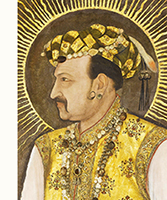East India Company
The ‘Governor and Company of Merchants of London Trading into the East-Indies’, as it was originally called, was a joint-stock venture initially formulated in 1599, and granted a Royal Charter on 31 December the following year. This gave them a 15-year monopoly on trading ‘into and from the said East-Indies, in the Countries and Parts of Asia and Africa, and into and from all the Islands, Ports, Havens ; Cities, Creeks, Towns and Places of Asia and Africa, and America, or any of them, beyond the Cape of Bona Esperanza [Good Hope] to the Straights of Magellan, where any Trade or Traffick of Merchandize may be used or had’. Their aim was to capture the lucrative spice trade. This put them in direct competition with the Portuguese and with the Dutch, whose own East India Company was established on March 20, 1602, was given a monopoly by the Dutch for 21 years, and was better financed.
 To begin with their first landfall was in Sumatra, and they concentrated their eforts on the Spice Islands, but it was decided
to seek a foothold in Mughal India, and in 1612 James I accredited Sir Thomas Roe as ambassador to negotiate with the Mughal Emperor Shah Jahangir (right). Thomas Coryat was in Ajmer when he arrived
from Surat, bearing gifts which, though they were not as bejewelled as the
Emperor would have liked, included curiosities such as an English coach, and a harpsichord with a musician to play it. After a frustrating and illness-ridden stay, Roe managed to leave in 1618 with an agreement
and letter to James I promising freedom of trade to the English merchants.1
To begin with their first landfall was in Sumatra, and they concentrated their eforts on the Spice Islands, but it was decided
to seek a foothold in Mughal India, and in 1612 James I accredited Sir Thomas Roe as ambassador to negotiate with the Mughal Emperor Shah Jahangir (right). Thomas Coryat was in Ajmer when he arrived
from Surat, bearing gifts which, though they were not as bejewelled as the
Emperor would have liked, included curiosities such as an English coach, and a harpsichord with a musician to play it. After a frustrating and illness-ridden stay, Roe managed to leave in 1618 with an agreement
and letter to James I promising freedom of trade to the English merchants.1
The later history of the East India Company, and how it became virtually an independent sovereign power in the subcontinent, is well known. Eventually its powers were taken over by the British Government, just as its rival, which acquired a similar status in the Dutch East Indies, was taken over by the Dutch state. Currently, because of its role in the colonisation of India, and its part in the Opium Wars, it is perceived as the archetypal evil corporation.
A useful series of blogs on the history of the Company is Trading Places: The East India Company and Asia.
1. Roe's journal, letters, and official documents are printed in The embassy of Sir Thomas Roe to the court of the Great Mogul, 1615-1619, as narrated in his journal and correspondence edited William Foster (Hakluyt Society, 1899); online at https://archive.org/details/embassysirthoma03roegoog, (2 vols). Return.
Close window to return.